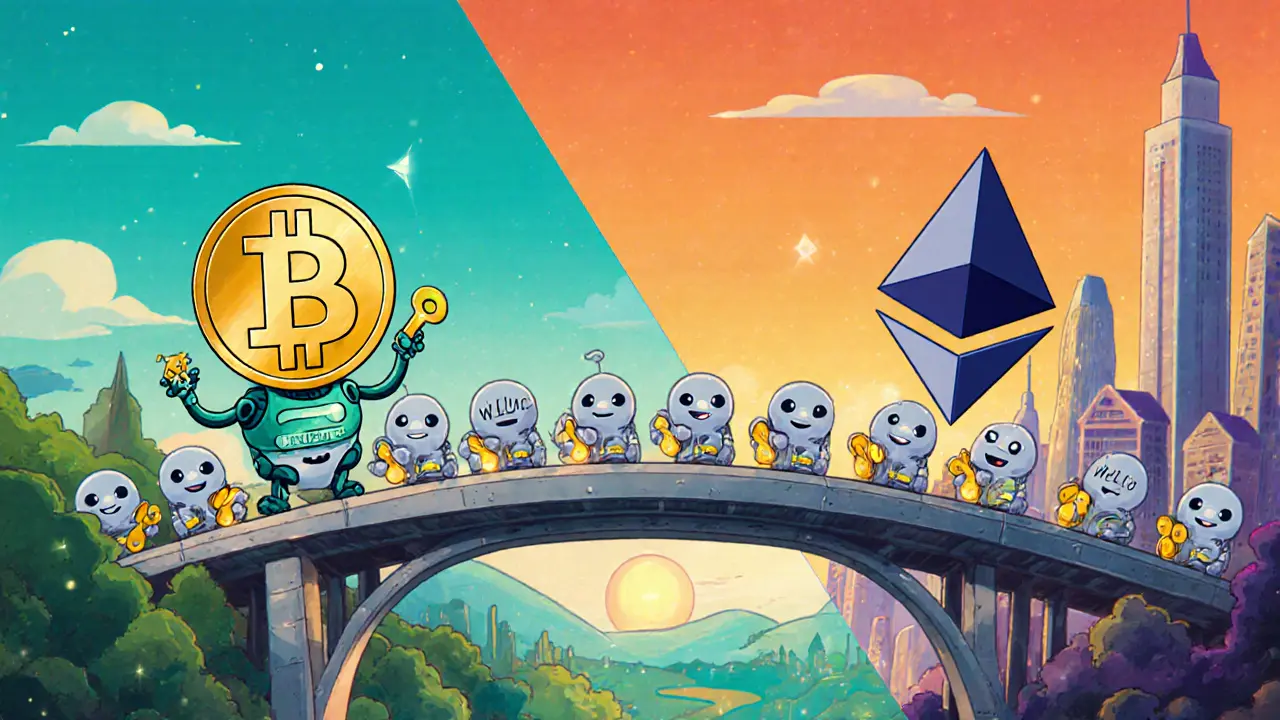ERC-20 Token Standard – All You Need to Know
When working with ERC-20, the most common token standard on the Ethereum blockchain. Also known as Ethereum Request for Comment 20, it defines a set of rules that let wallets, exchanges, and apps handle tokens in a uniform way. The ERC-20 protocol makes it easy to create, transfer and track digital assets without building a new blockchain from scratch. It’s the reason you see dozens of new coins popping up every week, and why developers can focus on product features instead of low‑level plumbing.
At its core, Ethereum, a global, decentralized platform for running smart contracts provides the environment where ERC‑20 tokens live. A smart contract, self‑executing code that runs on the blockchain enforces the ERC‑20 rules, handling balances, transfers and approvals without any central authority. In practice, this means a token can be sent from one address to another with just a single transaction, and every participant can verify the move on the public ledger.
Understanding tokenomics, the economic design behind a token’s supply, distribution and incentives is crucial when you evaluate any ERC‑20 project. Good tokenomics can attract investors, fuel staking rewards and sustain a healthy DeFi ecosystem, while poor design often leads to price dumps or regulatory scrutiny. Look for clear supply caps, realistic vesting schedules, and utility that matches the project’s goals.
Why ERC-20 Matters for Every Crypto Enthusiast
Because ERC‑20 tokens power most DeFi protocols, airdrop campaigns, and meme coin explosions, the standard shows up in almost every crypto story. Whether you’re chasing a new airdrop, comparing exchange fees, or figuring out how to report crypto income on your taxes, the token’s ERC‑20 nature determines the tools you’ll use. Our collection below walks you through practical steps: how to verify a token’s contract on Etherscan, how to claim airdrops safely, how to stake ERC‑20 assets for passive earnings, and how to navigate the latest tax reporting rules.
Regulators worldwide are paying close attention to token sales that use ERC‑20 contracts, so you’ll also find analysis of recent policy changes and their impact on trading volume. If you trade on decentralized exchanges, the DEX mechanics paragraph explains how automated market makers interact with ERC‑20 liquidity pools, and what fees you can expect. For creators, the guide shows how to launch a token with a solid tokenomics plan, avoiding common pitfalls that drag projects into scams.
Staking has become a big part of the ERC‑20 ecosystem. Our detailed earnings guide breaks down APR numbers, risk tiers, and step‑by‑step setup for popular staking platforms. You’ll see real‑world examples that illustrate how a well‑designed ERC‑20 token can generate steady passive income, while also learning the warning signs of rug pulls.
Security is another pillar. Smart contract audits, wallet safety tips, and how to spot fraudulent ERC‑20 tokens are covered in depth. We also discuss how account abstraction (ERC‑4337) may soon make ERC‑20 interactions even smoother, letting users pay gas with tokens instead of ETH.
All of this content is curated to give you a practical roadmap. Below you’ll discover clear, up‑to‑date articles on tokenomics, airdrop eligibility, staking returns, DEX operations, tax compliance, and the regulatory landscape affecting ERC‑20 assets. Dive in to level up your crypto strategy and stay ahead of the curve.
What Is Geojam Token (JAM) Crypto Coin? A Complete Guide
Explore Geojam Token (JAM): its purpose, tech specs, how to get started, staking rewards, market data, risks, and future roadmap in this comprehensive guide.
Wrapped LUNA Classic (WLUNC) Explained - What It Is, How It Works, and Risks
Learn what Wrapped LUNA Classic (WLUNC) is, how it works on Ethereum, its benefits, risks, and how to start using it.
- 22
- Read More

